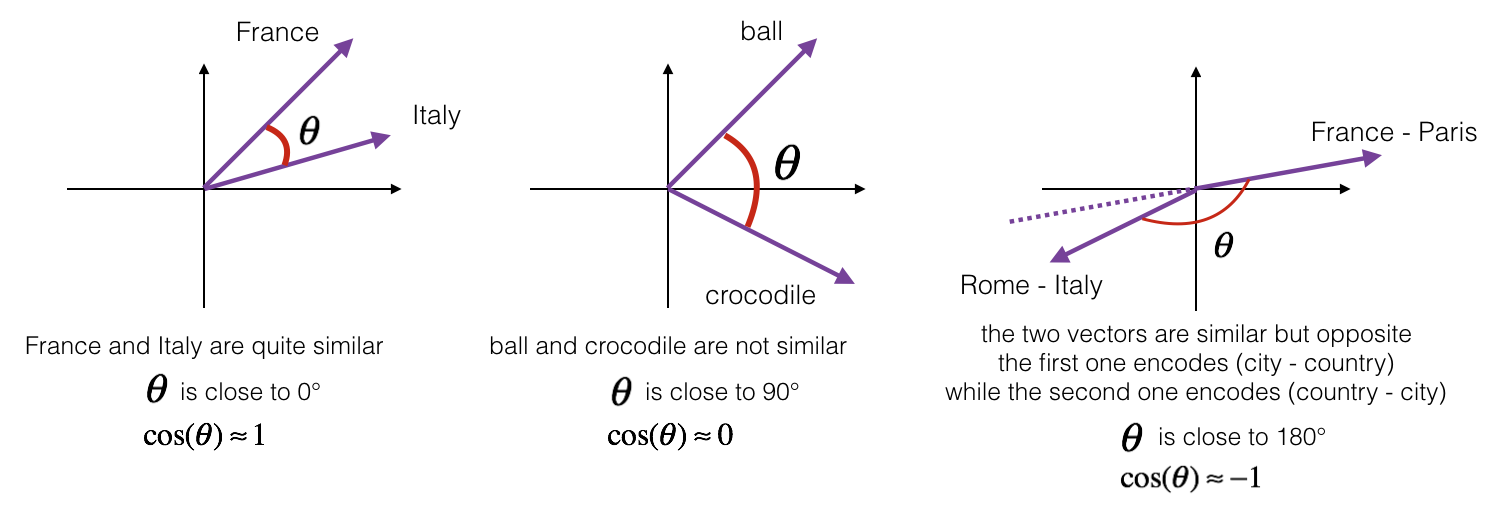We will use word embeddings (word vectors) to represent words and use document similarity measures to solve word analogy problems. An example of a word analogy problem is to fill in the blank:
Man is to Woman as King is to ______`.
Because word embeddings (i.e. word vectors) are very computationally expensive to train, most machine learning practitioners will load a pre-trained set of embeddings. We will load a collection of pre-trained embeddings and measure similarity between word embeddings, and use the similarity measures to solve word analogy problems.
I did this project in the Sequence Models course as part of the Deep Learning Specialization.
We will use 50-dimensional GloVe vectors to represent words.
To measure the similarity between two words, we need a way to measure the degree of similarity between two embedding vectors for the two words. Given two vectors u and v, the cosine similarity between u and v is the cosine of the angle between the two vectors. Some examples of measuring the similarity are shown below:
A word analogy problem asks you to complete this sentence:
a is to b as c is to ____.
An example is:
man is to woman as king is to queen.
To solve this problem, we try to find a word d, such that the associated word vectors are related as follows:
(embedding of b - embedding of a) is very similar to (embedding of d - embedding of c)
We measure the cosine similarity between (embedding of b - embedding of a) and (embedding of d - embedding of c), and seardh for the word d that minimizes the similarity.
The algorithm finds correct analogy pairs most of time, but sometimes finds wrong analogy pairs:
italy -> italian :: spain -> spanish
india -> delhi :: japan -> tokyo
man -> woman :: boy -> girl
small -> smaller :: large -> smaller
